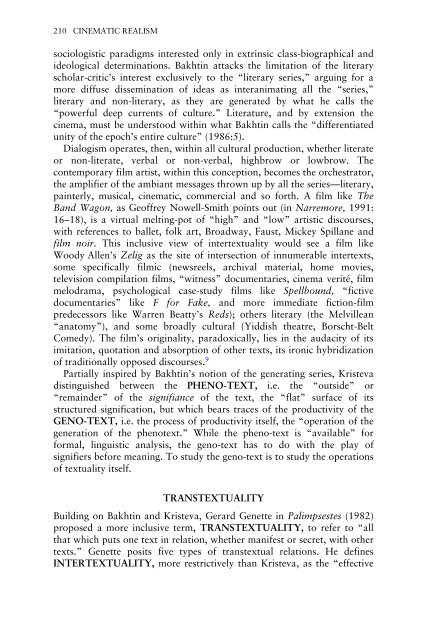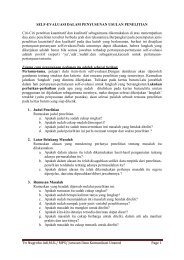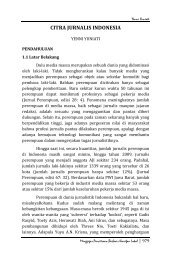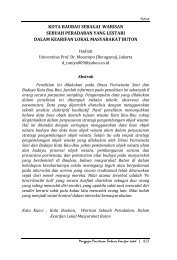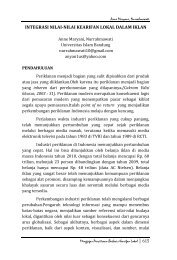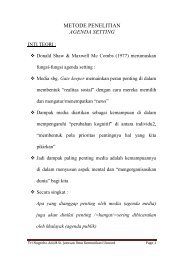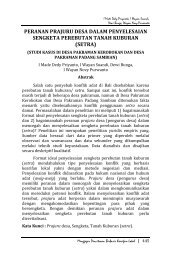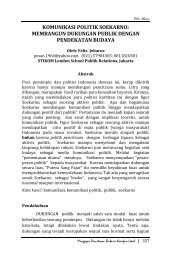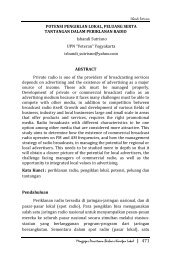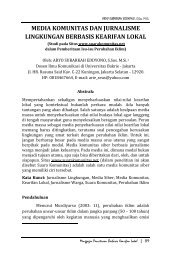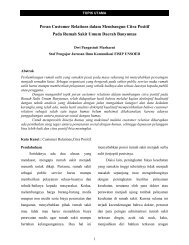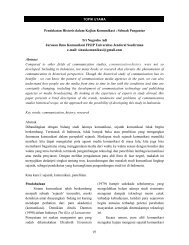New Vocabularies in Film Semiotics
New Vocabularies in Film Semiotics
New Vocabularies in Film Semiotics
Create successful ePaper yourself
Turn your PDF publications into a flip-book with our unique Google optimized e-Paper software.
210 CINEMATIC REALISM<br />
sociologistic paradigms <strong>in</strong>terested only <strong>in</strong> extr<strong>in</strong>sic class-biographical and<br />
ideological determ<strong>in</strong>ations. Bakht<strong>in</strong> attacks the limitation of the literary<br />
scholar-critic’s <strong>in</strong>terest exclusively to the “literary series,” argu<strong>in</strong>g for a<br />
more diffuse dissem<strong>in</strong>ation of ideas as <strong>in</strong>teranimat<strong>in</strong>g all the “series,”<br />
literary and non-literary, as they are generated by what he calls the<br />
“powerful deep currents of culture.” Literature, and by extension the<br />
c<strong>in</strong>ema, must be understood with<strong>in</strong> what Bakht<strong>in</strong> calls the “differentiated<br />
unity of the epoch’s entire culture” (1986:5).<br />
Dialogism operates, then, with<strong>in</strong> all cultural production, whether literate<br />
or non-literate, verbal or non-verbal, highbrow or lowbrow. The<br />
contemporary film artist, with<strong>in</strong> this conception, becomes the orchestrator,<br />
the amplifier of the ambiant messages thrown up by all the series—literary,<br />
pa<strong>in</strong>terly, musical, c<strong>in</strong>ematic, commercial and so forth. A film like The<br />
Band Wagon, as Geoffrey Nowell-Smith po<strong>in</strong>ts out (<strong>in</strong> Narremore, 1991:<br />
16–18), is a virtual melt<strong>in</strong>g-pot of “high” and “low” artistic discourses,<br />
with references to ballet, folk art, Broadway, Faust, Mickey Spillane and<br />
film noir. This <strong>in</strong>clusive view of <strong>in</strong>tertextuality would see a film like<br />
Woody Allen’s Zelig as the site of <strong>in</strong>tersection of <strong>in</strong>numerable <strong>in</strong>tertexts,<br />
some specifically filmic (newsreels, archival material, home movies,<br />
television compilation films, “witness” documentaries, c<strong>in</strong>ema verité, film<br />
melodrama, psychological case-study films like Spellbound, “fictive<br />
documentaries” like F for Fake, and more immediate fiction-film<br />
predecessors like Warren Beatty’s Reds); others literary (the Melvillean<br />
“anatomy”), and some broadly cultural (Yiddish theatre, Borscht-Belt<br />
Comedy). The film’s orig<strong>in</strong>ality, paradoxically, lies <strong>in</strong> the audacity of its<br />
imitation, quotation and absorption of other texts, its ironic hybridization<br />
of traditionally opposed discourses. 9<br />
Partially <strong>in</strong>spired by Bakht<strong>in</strong>’s notion of the generat<strong>in</strong>g series, Kristeva<br />
dist<strong>in</strong>guished between the PHENO-TEXT, i.e. the “outside” or<br />
“rema<strong>in</strong>der” of the signifiance of the text, the “flat” surface of its<br />
structured signification, but which bears traces of the productivity of the<br />
GENO-TEXT, i.e. the process of productivity itself, the “operation of the<br />
generation of the phenotext.” While the pheno-text is “available” for<br />
formal, l<strong>in</strong>guistic analysis, the geno-text has to do with the play of<br />
signifiers before mean<strong>in</strong>g. To study the geno-text is to study the operations<br />
of textuality itself.<br />
TRANSTEXTUALITY<br />
Build<strong>in</strong>g on Bakht<strong>in</strong> and Kristeva, Gerard Genette <strong>in</strong> Palimpsestes (1982)<br />
proposed a more <strong>in</strong>clusive term, TRANSTEXTUALITY, to refer to “all<br />
that which puts one text <strong>in</strong> relation, whether manifest or secret, with other<br />
texts.” Genette posits five types of transtextual relations. He def<strong>in</strong>es<br />
INTERTEXTUALITY, more restrictively than Kristeva, as the “effective


